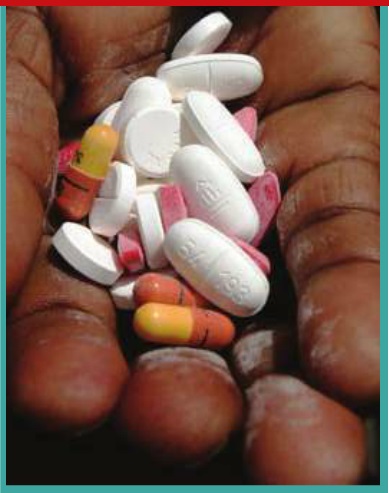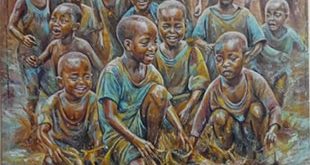New trial in pediatric HIV treatment gives hope for better results
Whenever his mother holds a spoon, little Imran becomes suspicious. He asks his mother whether it’s time for ‘panadol’ yet again.
He contracted HIV at birth and has to take Lopinavir and Lamivudine – two antiretroviral (ARV) drugs- twice every day.
“The drug is very bitter,” says his mother, “Sometimes he keeps it in the mouth and spits it out.”
The mother who spoke to The Independent on condition of anonymity says for the three year old to take medicine, they have to go through “some form of fight”.

Because of this, Imran does not get full doses of drugs. Health workers call this “non-adherence”. As a result, Imran recently had to be shifted to second line ARVs (Lopinavir and Lamivudine) after the virus stopped responding to the first line drug – Nevirapine.
Under normal circumstances, children like Imran should be taking either syrups or powders because it’s difficult for their tinny throats to swallow hard and bitter tablets. But when mothers and care takers cannot get these, they resort to breaking tablets into smaller doses, running the risk that children are given too little or too much of the drug in the end leading to resistance.
Dr. Cordelia Katureebe, the National Coordinator for Pediatric and Adolescent HIV Care at the Ministry of health says like Imran, of the estimated 95,000 children living with HIV, about 3000 are already on second line ARVs after failing on the cheaper and more available first line drugs. About 48 have jumped to the third and last line of treatment.
Katureebe says the ministry of Health is grappling with the challenge of about 69% of children below five years not having the HIV suppressed because they are rejecting drugs.
Esther Nambi, a Nursing Officer at JCRC clinic, an HIV/AIDS care giving facility along Entebbe Road, knows about the challenge first hand. She says many mothers also refuse to give the bitter drugs to their children despite constant cajoling. It creates a problem when problems of non-adherence emerge.
“It doesn’t make sense for health worker to shift a patient to another line when you know that they are not going to take the drug,” says Nambi when asked why some children are maintained on the first line even when the virus is not being suppressed. For one to be adequately suppressed, they have to take 95% of their drugs.
Generally, Ministry of Health figures indicate 30% of the children “get lost” (possibly a euphemism for dying) after initial dose of treatment, something that is partly blamed on their refusal to take the bitter medicine.
Of the estimated 95,000 children living with HIV, about 3000 are already on second line ARVs after failing on the cheaper and more available first line drugs. About 48 have jumped to the third and last line of treatment.
It is a problem for which researchers at the drug manufacturing company, Cipla, and the Geneva-based Drugs for Neglected Diseases Initiative (DNDi) have been trying to find a solution. The options they think can work include masking the Lopinavir drug to conceal its bitterness such that the children can take it more easily.
The researchers have started enrolling children on a study to establish the effectiveness of the drug if made in form of tiny sugar-coated pellets about the size of a grain of millet. The study is being conducted through the Joint Clinical Research Center (JCRC) at a site in Lubowa, one the outskirts of Kampala city.
When The Independent visited the trial site on June 13, some 15 children had been registered to participate. Dubbed, “The Living Study,” its coordinator Dr. Victor Musiime says they hope to follow 350 children between 0 and 15 years at centers in Lubowa, Fort Portal, Gulu and Baylor College at Mulago hospital and Epicenter Mbarara.
Musiime says Cipla has already provided the pellets to use in the study and these will be sprinkled on porridge, breast milk or food for the children to eat. He says the formulation is not affected by heat, does not require refrigeration, and has a longer life than the drug they are currently using.
They are looking at how the drug suppresses the virus, whether the drug is acceptable children, and any side effects.
Dr. Olawale Salami, the Project Manager Pediatric HIV at DNDi is optimistic that the study will yield good results. Olawale who says this drug will be of particular help to those who have already developed resistance to first line drugs, says the initial controlled study done two years ago in 24 children showed the drug works. He says the strength of evidence was low considering the small sample size.
“We now need a large population from different regions in an uncontrolled setting,” he told the Independent. He says the results of the study will be available by end of 2017 for the country to take action.
A similar study has been done in Kenya. The drug is already being used in Mozambique and Cameroon, though no studies have been done because it was approved by World Health Organisationin 2015.
In the case of Uganda, Katureebe says although it offers a solution to increasing drug resistance to Nevirapine which children get exposed to while still in their mothers’ womb, they have to be sure that the new drug works in the Uganda setting . She says the drug should not be be given outside trial as yet.
Katureebe says there is also a challenge of ensuring that all children can access the treatment. UP to 37% of the children are not yet enrolled on any form of ARVs. In 2015 alone, 1000 children below two years missed being initiated on treatment.
Even though there has been a reduction of new HIV infections among children globally, 7000 to 8000 children are born with the virus in Uganda annually. Of these, 40% die before turning one year.
 The Independent Uganda: You get the Truth we Pay the Price
The Independent Uganda: You get the Truth we Pay the Price




